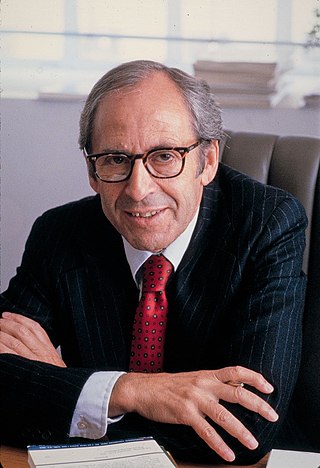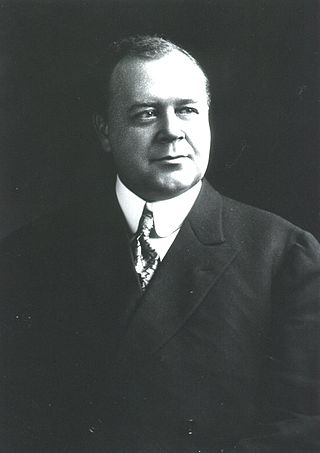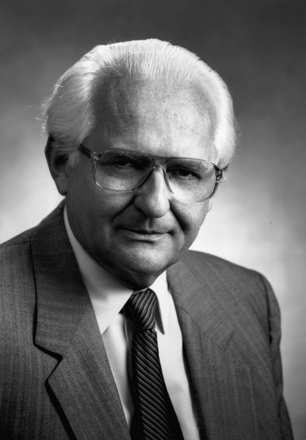
Borderline personality disorder (BPD), also known as emotionally unstable personality disorder (EUPD), is a personality disorder characterized by a long-term pattern of intense and unstable interpersonal relationships, distorted sense of self, and strong emotional reactions. Those affected often engage in self-harm and other dangerous behaviors, often due to their difficulty with returning their emotional level to a healthy or normal baseline. They may also struggle with a feeling of emptiness, fear of abandonment, and detachment from reality.

Arnold Cooper ) was the Tobin-Cooper Professor Emeritus in Consultation-Liaison psychiatry at the Weill Cornell Medical College and the Payne Whitney Psychiatric Clinic. He was a supervising and training analyst at the Columbia University Center for Psychoanalytic Training and Research. He died in June 2011.

Charles William Socarides was an American psychiatrist, psychoanalyst, physician, educator and author. He focused much of his career on homosexuality, which he believed could be altered. He helped found the National Association for Research & Therapy of Homosexuality (NARTH) in 1992 and worked extensively with the organization until his death.
Liaison psychiatry, also known as consultative psychiatry or consultation-liaison psychiatry, is the branch of psychiatry that specialises in the interface between general medicine/pediatrics and psychiatry, usually taking place in a hospital or medical setting. The role of the consultation-liaison psychiatrist is to see patients with comorbid medical conditions at the request of the treating medical or surgical consultant or team. Consultation-liaison psychiatry has areas of overlap with other disciplines including psychosomatic medicine, health psychology and neuropsychiatry.

Smith Ely Jelliffe was an American neurologist, psychiatrist, and psychoanalyst. He lived and practiced in New York City nearly his entire life. Originally trained in botany and pharmacy, Jelliffe switched first to neurology in the mid-1890s then to psychiatry, neuropsychiatry, and ultimately to psychoanalysis.

Franz Gabriel Alexander was a Hungarian-American psychoanalyst and physician, who is considered one of the founders of psychosomatic medicine and psychoanalytic criminology.
Peter A. Olsson is an American psychiatrist, psychoanalyst and author. He is author of the book, Malignant Pied Pipers of Our Time: A Psychological Study of Destructive Cult Leaders from Rev. Jim Jones to Osama bin Laden.

The Austen Riggs Center is a psychiatric treatment facility in Stockbridge, Massachusetts. It was founded by Austen Fox Riggs in 1913 as the Stockbridge Institute for the Study and Treatment of Psychoneuroses before being renamed in honor of Austen Riggs on July 21, 1919.
Irving Bieber was an American psychoanalyst, best known for his study Homosexuality: A Psychoanalytic Study of Male Homosexuals (1962), in which Bieber took the position that homosexuality is an acquired trait.
Susan W. Coates is an American psychoanalyst, who has worked on gender identity disorder in children (GIDC) and early childhood trauma.
Glen Owens Gabbard is an American psychiatrist known for authoring professional teaching texts for the field. He is Clinical Professor of Psychiatry at Baylor College of Medicine in Houston, Texas, and is also training and supervising analyst at the Center for Psychoanalytic Studies in Houston.
The American Academy of Psychodynamic Psychiatry and Psychoanalysis (AAPDPP) is a scholarly society including psychiatrists interested in all aspects of psychodynamic psychiatry.

Zbigniew Jerzy Lipowski, MD, was a Polish psychiatrist, historian, author, political commentator and speaker. He wrote several books in the on the topics of consultation-liaison psychiatry, delirium and psychosomatic medicine as well as hundreds of articles and reviews that have been widely published in journals such as The New England Journal of Medicine, The Journal of the American Medical Association, and the Canadian Medical Association Journal.
Benjamin Karpman was an American psychiatrist known for his work on human sexuality. He served as Professor and Head of Psychiatry at Howard University College of Medicine from 1921 to 1941.
Donald S. Kornfeld is an American psychiatrist best known for his work on psychiatric issues associated with medical practice. This subspecialty is known as Consultation-Liaison Psychiatry or Psychosomatic Medicine.

Abram Kardiner was a psychiatrist and psychoanalytic therapist. An active publisher of academic research, he co-founded the Psychoanalytic and Psychosomatic Clinic for Training and Research in the Department of Psychiatry at Columbia University in New York City. Kardiner was deeply interested in cross-cultural diagnosis and the psychoanalytic study of culture. While teaching at Columbia, he developed a course on the application of psychoanalysis to the study of culture and worked closely with anthropologists throughout his career.
Roy Richard Grinker Sr. was an American neurologist and psychiatrist, Professor of Psychiatry at University of Chicago, and pioneer in American psychiatry and psychosomatics.
Jonathan M. Raines graduated from the University of Pennsylvania with a B.A. in Psychology. He attended Temple University School of Medicine, where he was awarded the O. Spurgeon English Award as well as his M.D. in 1982. Subsequently, he served his internship at Pennsylvania Hospital and his residency at the Institute of the Pennsylvania Hospital, where he received the Glencairn Prize.

Eric M. Plakun is an American psychiatrist, psychoanalyst, researcher and forensic psychiatrist. He is the current medical director/CEO at the Austen Riggs Center in Stockbridge, Massachusetts. Plakun's primary interests include the mental health advocacy, full implementation of the mental health parity law, access-to-care issues, and reducing health disparities; the value of and evidence base for psychosocial treatments and the diagnosis, treatment, longitudinal course and outcome of patients with borderline personality disorder and treatment resistant disorders. Plakun has been widely published and quoted in the media on psychotherapy and psychiatry, including in The New York Times and The Globe and Mail. He has appeared in the media to discuss his psychiatric work on WAMC, the Albany, New York, affiliate of NPR. and on CBS 60 Minutes. His psychiatric research has been widely cited.
Joseph Cyrus Rheingold was a psychiatrist and writer of Fear of Being a Woman (1964) and The Mother, Anxiety and Death (1967), each centered on the theory of maternal destructiveness.








